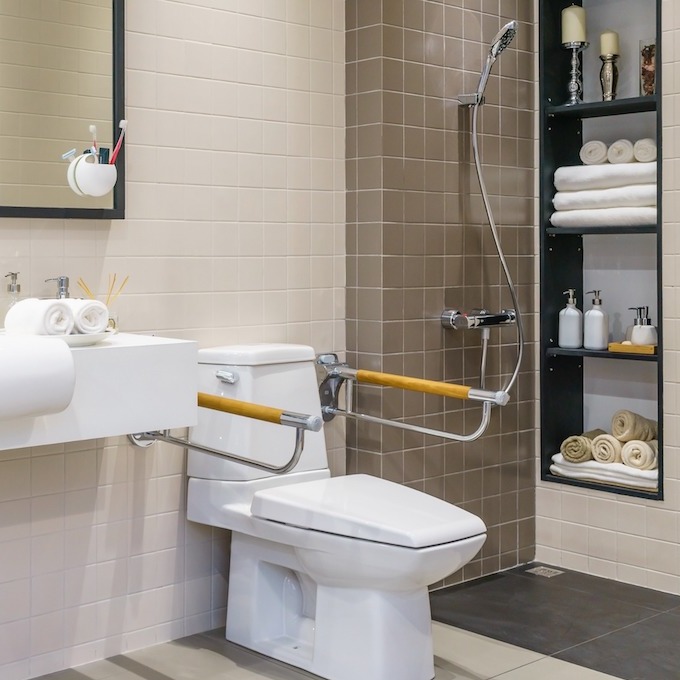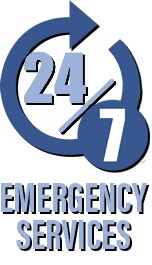
Prevent Blockages in Your Sewer Line
If you have children in the house, you’ve likely experience clogged toilets. Repairs can often be done by fishing out the object they flushed down it, but sometimes, that isn’t enough. Clogged toilet repairs can be more complicated, based on what was flushed or blocking the underground sewer line.
What are the most common causes of a clogged toilet?
Clogged toilet repair can be challenging when they are clogged in the following areas:
- The toilet trap: This is the S-shaped section of the toilet bowl and is where the toilet is connected to the drainpipes. This curved channel holds a small amount of standing water to prevent odorous sewer gases from escaping.
- The branch drain line: This is a waste pipe where waste is collected from two or more water appliances and sends it to the sewer line.
- The vent pipe: Little information is known about this part of a toilet, but are an important component of the toilet working properly and safely. This equalizes pressure in the plumbing system to prevent water from being siphoned out of the drain traps and releasing sewer gases into your home.
- The main sewer line: This is located underground and runs between the house and the sewer system or septic tank. It is vulnerable to tree root penetration and causes severe problems requiring expensive clogged toilet repair.
How can I prevent clogged toilets?
Here are five ways you can minimize, even eliminate needing professional clogged toilet repairs:
- Toilet Paper. Less is more when it comes to toilet paper. Use 1-ply instead of 2-ply and use less of it. Even though it is designed to break down, it doesn’t happen quickly.
- Careful What Is Flushed. There are only three things that should ever be flushed down a toilet: Water, toilet paper, and human waste. Keep animal waste out of the toilet along with cotton balls, Q-tips, feminine products, diapers, and wipes.
- Always Close the Lid. Things get dropped and then the toilet gets flushed. Before you know it, you need emergency clogged toilet repair.
- Watch Tree Roots. If there are large trees planted around your home, watch the tree roots. If they grow into the drain or sewer pipes, it can break or clog the lines and expensive clogged toilet repairs are needed in the way of having the lines dug up and replaced.
How can I tell the difference between a plugged and an overflowed toilet?
Who hasn’t experienced an overflowing toilet?! You do your business and then flush the toilet, and up comes the water in the toilet bowl, and it keeps coming. Before you know it, wastewater is flooding the bathroom floor.
This is the common indication of a clogged toilet drain. If you’re alert to your toilet, you’ll know it is at the flow-over point if the water doesn’t fill the bowl back up. In addition to the things that we’ve discussed already, other things that can cause you to need professional clogged toilet repair includes:
- Flushing kitchen waste like FOG, (fat, oil, grease), meat trims, and veggie peels.
- Low-flow toilets have clogs more than standard toilets. In older toilets the internal workings of the tank are rusted and worn can cause a toilet to flush.
How Can You Stop An Overflowing Toilet Quickly?
If you are experiencing an overflowing toilet, the following steps are the best ways to stop the water from flowing quickly:
- The Shutoff Valve
There should be a shut-off off valve behind the tank close to the floor. Turn the water off as quickly as possible and leave it off until the clogged toilet repair has been completed.
- The Tank Flapper
If you can’t get the shutoff valve to turn off, remove the tank lid and move the flapper in a closed position over the valve. You still need clogged toilet repair, but this will stop the water from overflowing.
- The Tank Float Ball
If water is still overflowing, with the tank lid removed, raise the float ball up and this will stop the water from flowing. Again, you still need clogged toilet repair done, but this will give you some time.
Underwater: Is It Time To Surrender?
How do I know when it’s time to call a plumber? If you’ve tried all the steps we’ve listed here and you still have an overflowing toilet, call a professional plumber for clogged toilet repair. Things that can tell you if the problem is more than DIY repair are odd noises coming from the toilet when flushed.
If you notice an odor coming out when the toilet is flushed, beyond the human waste odor, this could be an indication of sewer line problems. If you live in Santa Clarita, CA, and the toilet gurgles when flushed, you need professional clogged toilet repair. Call us at 661-201-6016 today!

